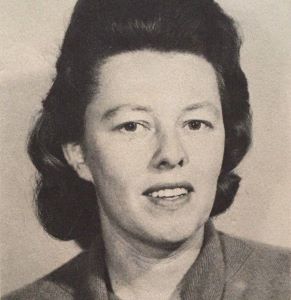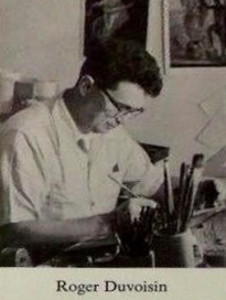The Hungry Leprechaun

Author:
Mary Calhoun
Illustrator:
Roger Duvoisin ![]()
![]() Complete Authored Works
Complete Authored Works
Publication:
1961 by William Morrow & Company
Simultaneously published by:
George J. McLeod Limited, Toronto
Genre:
Fairy Tales, Fiction, Picture Books
Pages:
34
Current state:
This book has been evaluated and information added. It has been read but content considerations may not be complete.
Book Guide
Search for this book used on:
Once upon a time everyone in Ireland was poor, and young Patrick O'Michael O'Sullivan O'Callahan had only dandelion soup to eat. A leprechaun, he thought, will make me rich, so he went out and caught one. But what a leprechaun! Tippery was as poor and miserable and hungry as Patrick himself. Worse than that, he'd used up nearly all but a bit of his magic. Young Patrick ordered Tippery to use that wee bit of magic to change the pot of dandelion soup into gold, but Tippery had forgotten how to do it. Instead of gold, the soup turned into a potful of frogs! When Tippery finally did get his magic to work, it wasn't gold he made at all, but something entirely unexpected that became a great discovery—for all of Ireland.
The spirit of the little people of Ireland pervades this gay tale and the lighthearted drawings by Roger Duvoisin. Together they make a book perfect for St. Patrick's Day, and for every other day of the year.
From the dust jacket
To view an example page please sign in.
To view awards and booklists please sign in.
Resource Guide
Episode 70: Why Read Fairy Tales?
Released in 2020 by The Literary Life
Available formats: Streaming Audio
Length: 1 hr. 29 min.
View on the The Literary Life site
"Angelina Stanford and Cindy Rollins tackle the topic of fairy stories, discussing the what, why and how of reading them. Angelina shares the distinctive characteristics of fairy stories in contrast to other types of stories, such as myths. They deal with the question of whether fairy tales are 'escapist', the influence of the Grimm brothers scholarly work on interpreting fairy stories, and allowing the story to unveil its deeper truths without forcing meaning onto it.
Angelina gives an illustration of how to see the gospel messages in fairy tales by talking us through the story of Sleeping Beauty. She refutes the ideas that fairy tales are about human romance or are misogynistic. She also highlights some of the Enlightenment and Puritan responses to fairy tales that still linger with us today. Cindy and Angelina also discuss some common concerns such as the magical, weird, or scary aspects of fairy tales. Angelina also makes a distinction between folk tales, literary fairy tales, and cautionary tales."
Find This Book
Search for this book used on:




